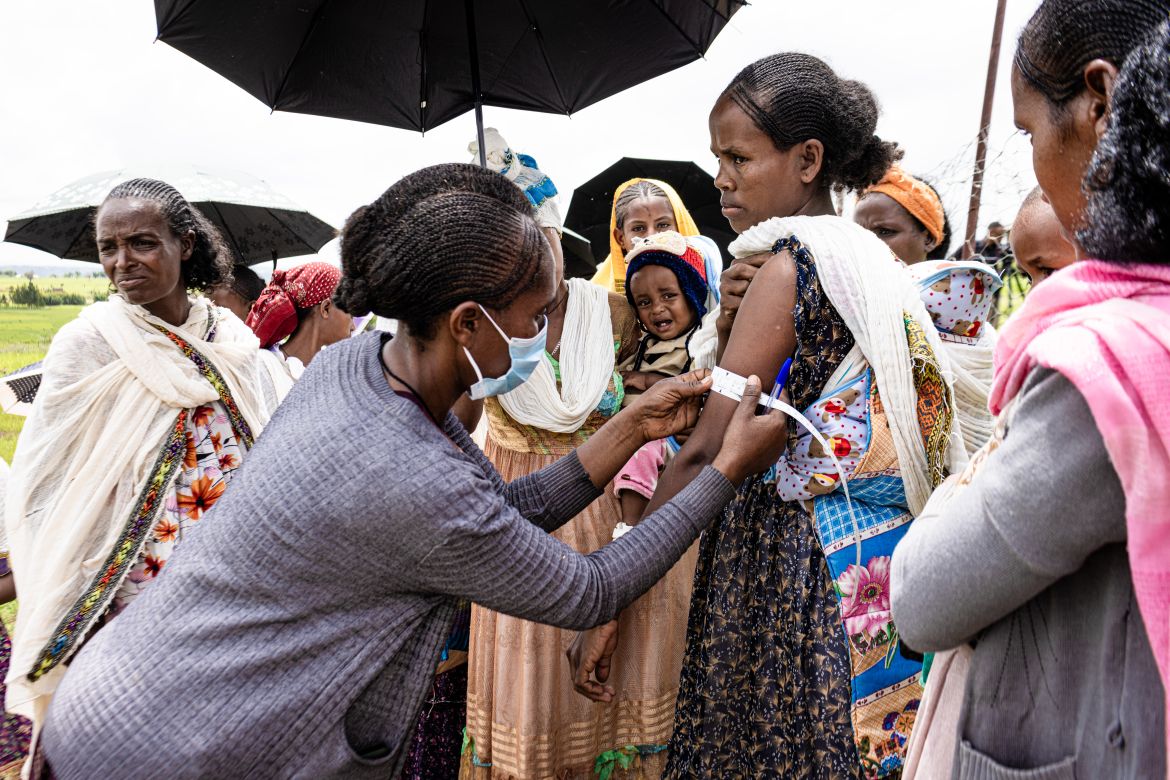In Pictures
Farmers missed several consecutive planting and harvesting seasons, and malnutrition rates, especially among new mothers and children under five years old, have been alarmingly high [Alyona Synenko/ICRC]By Alyona SynenkoPublished On 5 Dec 20245 Dec 2024
On his way home from the market, Birhane noticed a group of younger kids kicking a piece of scrap metal. He recognised them from when they had gone to school together before COVID-19. That was also before the devastating armed conflict between the Ethiopian defence forces and the Tigray People’s Liberation Front shattered his hopes of getting a complete education.
Overcoming the disappointment of quitting school early, the 16-year-old turned to helping his father run the family’s farm and sell produce at the market. He was still determined to realise his ambition of “improving himself and supporting his family” despite the violence and hardship that have racked his community.
Coming closer to the children, Birhane realised with a flash of horror that the object they were playing with was not a simple piece of scrap metal, but an explosive.
He yelled at the children, telling them to stop. When they did not listen, Birhane pushed several of them to the ground and grabbed the object to throw it away. It exploded in his hands.
Advertisement
Birhane lost a leg and the fingers on both hands in the explosion.
Two years after the peace agreement was reached, towns in Tigray are brimming with hope for lasting stability and economic renewal. Despite the heavy damage the armed conflict caused to the economy, the streets of cities like Mekelle, Shire and Axum, lined with traditional coffee shops, bristle with traffic and revived commerce.
But the scars of violence remain visible in rural areas, where metal carcasses of burned vehicles are slowly rusting away on the roadsides, and unexploded remnants of war continue to kill and maim civilians – mostly children.
“Since the beginning of last year, we treated 243 people injured by unexploded ordnance,” said Venkatakannan Packirisamy, who runs the physical rehabilitation project for the International Committee of the Red Cross (ICRC) in Ethiopia. “But people we receive make just a fraction of all victims.”
Some are killed, and others may not reach ICRC facilities. Still others have injuries that ICRC services simply cannot treat. Eighty percent of the victims the project has received are children.
Tucked in the mountains, Birhane’s village has one main street populated by stone houses and shops of corrugated metal. Piles of rusting munitions are scattered throughout, some marked with stones painted red and others swallowed from view by lush vegetation. Until they explode – often taking lives with them.
northern Ethiopia. [Alyona Synenko/ICRC]In the mountain village of Newi, women walk past unexploded ordnance, returning from a religious ceremony. [Alyona Synenko/ICRC]Ethiopian Red Cross volunteers and ICRC weapon contamination specialists carry out a session on safe behavior for children in Newi. The overwhelming majority of unexploded ordinance victims are children. [Alyona Synenko/ICRC]Tabir Gebreyohannes’ eight-year-old daughter was severely injured when she stepped on unexploded ordnance. The child has recovered, but Tabir lives in constant fear as weapon contamination remains a deadly threat.
Tabir’s daughter has started walking again, and Tabir hopes that, eventually, she will return to school. But the child is still traumatised and afraid to leave the house. [Alyona Synenko/ICRC]
